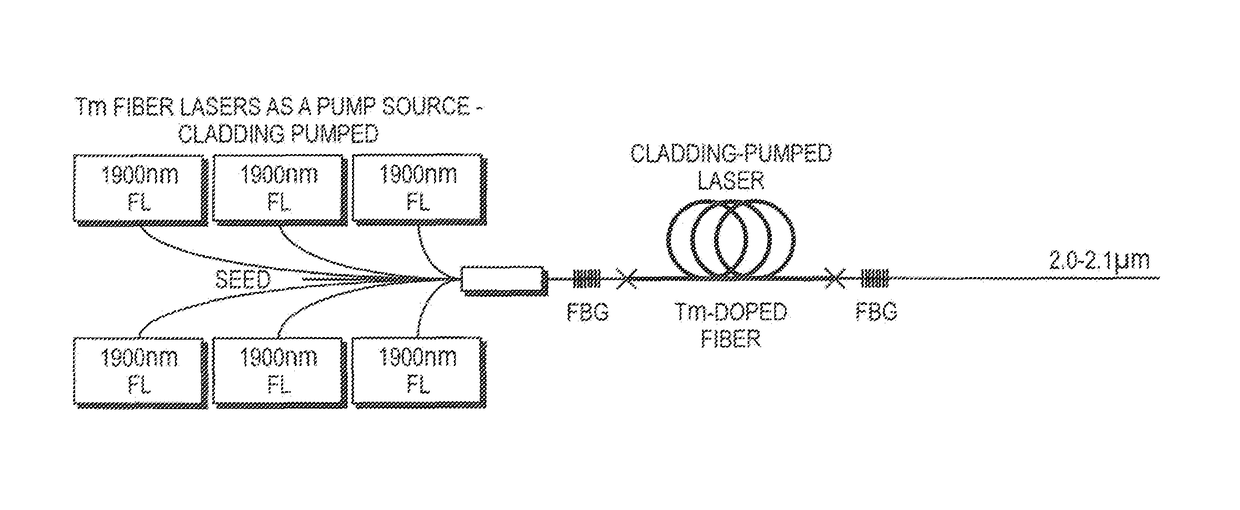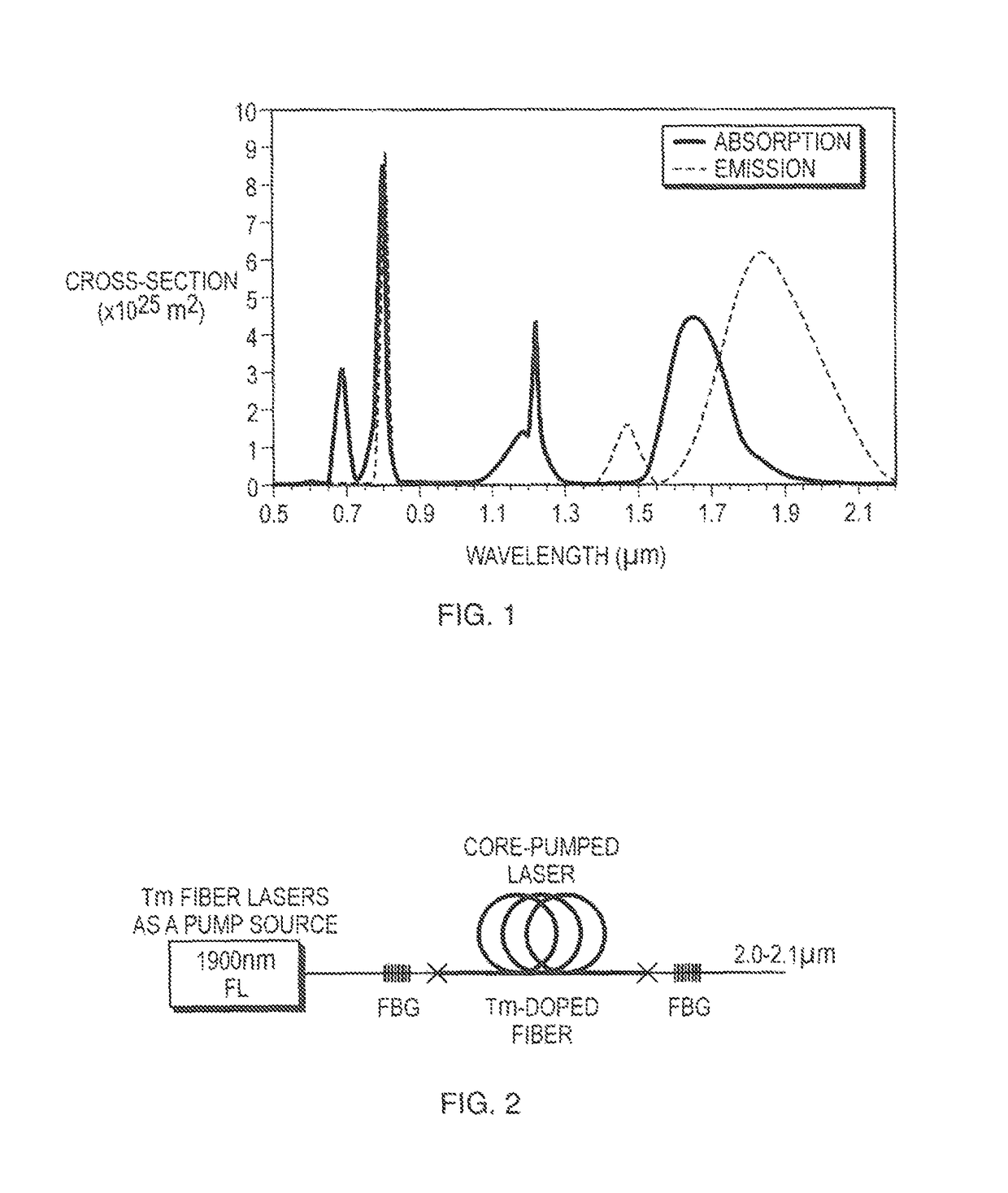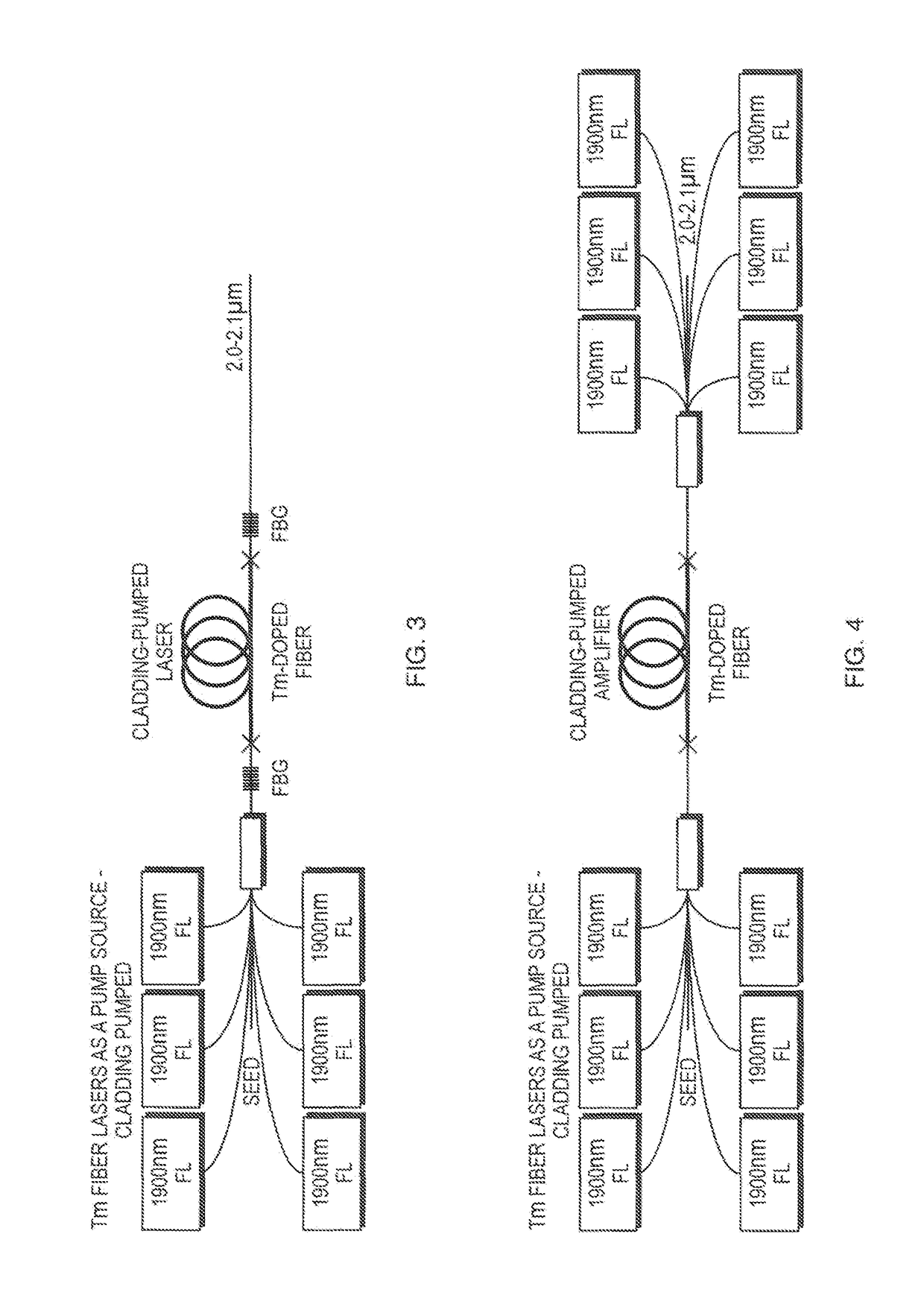Highly efficient thulium doped fiber laser
a fiber laser, high-efficiency technology, applied in the direction of laser details, active medium materials, laser shape and construction, etc., can solve the problems of low output power of the fiber laser, difficult generating light in the 1.6-1.9 um spectral region, and hot fibers, etc., to achieve the effect of reducing thermal loading, reducing power scaling, and increasing the number of fibers that can be combined into a single fiber
- Summary
- Abstract
- Description
- Claims
- Application Information
AI Technical Summary
Benefits of technology
Problems solved by technology
Method used
Image
Examples
Embodiment Construction
[0021]One embodiment of this invention is to resonantly pump a Tm-doped fiber laser or amplifier in the 1.6-1.9 micron wavelength range. By developing several smaller power fiber lasers operating in the 1.6-1.9 micron region, these lasers can be used as a pump source for generating 2-micron light in a Tm-doped fiber laser. Pumping in this range can yield up to 80-95% quantum efficiencies (QE). With this high efficiency, very little waste heat is gel rated in the fiber, especially compared to pumping with a diode at 795 nm.
[0022]FIG. 1 is a graphical representation of the wavelengths at which thulium can be pumped and emitted. By pumping in the 1.9 micron range, one can achieve absorption in the fiber which produces a small quantum defect. This results in extremely efficient lasing for significant power scaling.
[0023]FIG. 2 depicts a resonantly-pumped Tm fiber laser, more particularly, a core-pumped laser. In this embodiment, a 1908 nm laser is used to pump the core of another Tm-dop...
PUM
 Login to View More
Login to View More Abstract
Description
Claims
Application Information
 Login to View More
Login to View More - R&D
- Intellectual Property
- Life Sciences
- Materials
- Tech Scout
- Unparalleled Data Quality
- Higher Quality Content
- 60% Fewer Hallucinations
Browse by: Latest US Patents, China's latest patents, Technical Efficacy Thesaurus, Application Domain, Technology Topic, Popular Technical Reports.
© 2025 PatSnap. All rights reserved.Legal|Privacy policy|Modern Slavery Act Transparency Statement|Sitemap|About US| Contact US: help@patsnap.com



